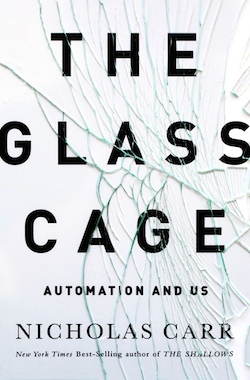Sections
Pick of the Year – Take Five
Looking back over the year and 36 separate round up blog posts, it’s difficult to try and choose five topics for especial highlight in terms of the extent to which they have been covered here but also in terms of relevance to the wider technology industry into 2015. Here’s the final selection together with links to relevant posts in this blog over the last year.
Android, China and the Rest of the World
Android has continued expanding its footprint during 2014 and doubtless will continue to do so across the world in 2015 fuelled by cheap Android One handsets running Lollipop. However, all is not quite so rosy once you look a little deeper. Few OEMs are making any real profit from shipping Android handsets which are slipping into fast moving consumer goods (FMCG) territory with ever decreasing shelf life. Arguably no-one other than Google with their expanding closed source GMS layer is actually able to genuinely innovate on top of the growing vanilla AOSP base platform. Most worryingly of all for Google, a third of all Android handsets are built on AOSP and don’t include GMS. For these reasons, the most interesting questions in mobile are not really about Android per se but what Google will do to respond to the threat posed by Chinese and potentially other OEMs forking AOSP and building a rival GMS services layer on top, potentially built around a different service aggregation model centred around chat as is prevalent in Asia. The stakes are incredibly high. Smartphone growth in the coming years will be focussed in developing nations such as India, Indonesia, Brazil and Turkey all a long way away from Silicon Valley.
Wearables, Things and the Internet
The physical and virtual worlds continued to merge in 2014 with a veritable Cambrian explosion of wearable and Internet of Things propositions often backed by Kickstarter campaigns. Just a tiny few of the concepts on offer were covered here and here. The pivotal role of Bluetooth in acting as the conduit for this liminal world connecting physical objects to the web was also covered. As was the crucial need to focus on collection, analysis and visualisation of the data from devices in order to create a viable service model beyond simply selling a cheap bit of hardware. Health and fitness wearables remain the most mainstream application of such models right now with the likes of Fitbit, Garmin and TomTom doing very well. It’s an area that Apple Watch will major on when it finally enters the wearable scene in 2015. Media reaction to its launch announcement was mixed. Many analysts noted the overt links made by Apple to the world of high end fashion and luxury particularly in relation to the Gold Edition. Fashion becomes a much more elevated concern with wearables than with smartphones for reasons covered here.

Smart Retail
The blurring of the physical and virtual worlds has a particular relevance and impact on the retail sector. Developments in this space from showrooming to retail beacons to click and collect were all covered extensively here, here and here. Add to this the impact of Apple Pay and the potential for alternative currency innovation and you have a really interesting space ripe for disruption in 2015.

Automation and its Discontents
Automation concerns rose up the tech agenda in 2014 and are likely to continue to do so in 2015. The main issues surround automation as an agent of deskilling and the unavailability of appropriate alternative work for those whose jobs were rendered obsolete through robotic intervention. The grim spectre of automation dystopia seems unlikely to go away any time soon.


Inequality
Income and wealth inequality were another societal concern rising up the political agenda in 2014 thanks to Thomas Piketty’s erudite bestseller on the subject. Hard questions could be asked about whether technology serves to exacerbate or ameliorate inequality. The role social media was questioned too, specifically how representative the online ‘echo chamber’ is of reality in a world where the majority still have no real representative model of the internet let alone how to use smartphones to access it. As individuals they wouldn’t even register as a dot against the UK inequality giant:

Smartphones and Manufacturers
- Benedict Evans’ call for new questions in mobile beyond iOS vs. Android was covered a couple of weeks ago. He covers the same interesting territory in this follow-on podcast.
- Microsoft’s UK-based MixRadio, acquired from Nokia, has been bought in turn by Japanese OTT Messaging provider Line. It’s brings a global streaming music proposition to Line albeit one only available on Lumia Windows Phone today which will presumably now become cross-platform. It also allows Microsoft to dump a service that isn’t aligned with where they seem to be heading:
“The deal gives Line, already popular with 170 million monthly active users, a new way to attract more customers at a time of rising interest in music streaming. It also explains what Microsoft would do with the music service after Microsoft said it would spin it off, as the company now focuses on “productivity.” Apparently music doesn’t make people productive.”
- The last Monday Note of 2014 surveys the hardware product landscape at Microsoft taking in Lumia, Surface and the XBox One. None of these products are making much of an impact on the company’s bottom line and arguably none of them really align with Nadella’s self-expressed “Cloud First, Mobile First” strategy. The biggest question for Jean-Louis Gassée is what Microsoft will do about Windows Phone. Given wider smartphone industry dynamics, a change of tack in 2015 seems plausible:
“Windows Phones sell less and they cost more to make, putting Microsoft’s smartphone business in a dangerous downward spiral. … Should Microsoft pursue what looks like a manly but losing Windows Phone hardware strategy or switch to making and selling Android phones? Or should it drop an expensive smartphone design, manufacturing, and distribution effort altogether, and stay focused on what it does already, Mobile First, Cloud First applications?”
- Mozilla have launched their first Firefox OS phone in Japan in collaboration with network operator KDDI. Called the Fx0 it’s built around a Snapdragon 400 quad core processor and apparently manufactured by LG. It’s a big deal in terms of both technology and a cool translucent design highlighting the “openness” of what is often perceived as a low end platform. The Fx0 could well change that perception and interesting there are also reports this week that Xiaomi are also building a Firefox OS based phone and indeed a whole OS platform called MiOS presumably around the same Fx0 platform:
“The new Firefox OS update includes support for innovative technologies like NFC, 4G LTE, WebRTC and more, making Fx0 the first Firefox OS phone to include many of these features.”

Google and Android
- @edent’s detailed examination of Android Lollipop UI inconsistencies certainly highlights a curious inattention to detail on Google’s part. Whether it constitutes a “failure of QA” as opposed to lack of discipline or prioritisation is hard to discern though the point that it has wider quality ramifications is undeniable:
“There are dozens of little irritants like this. They’re not show-stopper bugs, just a sign that the release team and QA team haven’t bothered to do their jobs. If they’ve missed these basic flaws – what else have they overlooked?”
- One of the examples cited is the sloppy variety of ways that the Bluetooth icon is represented within the system user interface:

- The shift from Desktop to Mobile is presenting Google with problems indexing ‘dark social‘ traffic in mobile apps. Ad revenue through search is also facing increasing challenges as outlined in this LinkedIn post which essentially condenses the problem they face to a single question: why search for products via Google and then go to the Amazon app when you can search directly in the Amazon app instead?
“Google’s Amazon nightmare would get scarier if Amazon’s Kindle Fire tablets and (rumored) phones ever got wide adoption.”

- Google’s Project Ara, an ambitious attempt to build a modular mobile phone continues to intrigue and quietly build momentum. It seems that the initially supported chipsets will include Rockchip, Marvell and NVidia (in the form of the Tegra K1). The initial “Spiral 2” prototypes are being developed by Quanta.
Apps and Services
- The global number of mobile application developers has been estimated at 5.5 million in Vision Mobile’s 2014 Developer Economics report. It’s such a large number that “revenue from app store sales cannot possibly pay their salaries” and it seems from this analysis that many who do submit apps do it as a sideline hobby activity from lucrative mainstream employment:
“Developers are in high demand and as employees in the US they will typically earn upwards of $100k per year with relatively little experience. Proven talent in Silicon Valley can easily earn 50-100% more. Salaries in Western Europe are not quite as eye-catching but not that far behind either. In countries where the cost of living is much lower, developer salaries are obviously more modest but actually often a greater multiple of the national average wage.”
- GigaOM have published a research paper outlining four high level meta models or business patterns that new entrants can adopt to create and position their disruptive service concept:
- Adjacency: “highly centralized, powerful hubs that deploy products, services, software, and payments.” Examples: Alibaba, Amazon
- Decentralised destructive creation: “rolling out alternative global services using the homogeneity and connectedness of what’s typically the open-source community.” Example: Bitcoin
- Software definition: “a software-defined competitor betting on a new global market and often taking advantage of global mobile access.” Examples: Netflix, Uber
- Reverse data: offerings that “return power to the individual users of a network rather than the platform provider by giving them bargaining power via control of their personal data.” Examples: YikYak, Telegram, Slack
- Instagram could end up being the deal of the decade. Many were shocked in 2012 when Facebook paid a $1 billion for the imaging focused social network. Just over two years later, the company is worth $35 billion by some estimates with advertising revenues continuing to climb steeply:
“Instagram’s advertising — with companies like Adidas, GE and Lexus — is going so well that the company could bring in far more revenue than he expected. In fact, he estimates that Instagram’s revenue will be close to $3 billion next year, or about three times what Facebook paid for the company.”
- Meanwhile Yahoo is unwell. The NYT survey their grim position in a long read that covers a lot of territory. Ultimately there are are limited number of ways of making money as an internet company: monetising a marketplace, selling hardware and through advertising revenue. Marissa Meyer when she became CEO of Yahoo a couple of years ago tried to break their advertising-based mould inspired by one of her icons, Steve Jobs. However, in spite of the undeniably significant changes she has introduced during her tenure, the company remains essentially a zero billion dollar proposition once you take away the lucrative stake in Alibaba. The article paints a picture of activist shareholders increasingly applying pressure on Yahoo to “act it’s age” and merge with AOL another unfashionable ad-funded behemoth whose continued existence serves to remind that:
“Dynamic and wildly profitable Internet companies like Facebook and Google may get most of the attention, but Silicon Valley is littered with firms that just get by doing roughly the same thing year after year”

Asia
- This TechInAsia post highlights the ambitions of Lei Jun CEO of Xiaomi to make his company “China’s most recognizable international lifestyle brand“. The article points out that although he frequently channels Steve Jobs, the company setup owes more to Jeff Bezos’ zero profit model as Xiaomi aggressively reinvests its profits to support its massive growth:

- In terms of valuation Xiaomi is now worth $45billion making it a major player by US technology standards albeit one without a substantial patent portfolio which could prove a problem in terms of future expansion:
“At $45 billion, Xiaomi would be more valuable than most other Silicon Valley technology startups, including Uber,”
- Talking of which, Baidu are partnering with Uber which should help the US company expand across Asia:
“the strategic partnership between Uber and Baidu is more significant than the investment, because Baidu Maps will be able to integrate Uber. … Baidu’s mobile search .. will also integrate Uber “request a ride” buttons.”

- Baidu have also announced impressive results for Deep Speech, their speech recognition system optimised to address “noisy environments”. It’s the latest in a series of major Deep Learning advances that Baidu have made in 2014 following the on-boarding of key hire Andrew Ng. Taken together they suggest that Baidu will mount a concerted and serious assault on the likes of Google in this space in the coming years:
“Deep Speech outperformed public web APIs (Google Web Speech, wit.ai) as well as commercial systems (Bing Speech Services, Apple Dictation), especially in the regime of speech against noisy backgrounds. In noisy environments, Deep Speech outperforms all of these systems by over 10% (Word Error Rate).”
- China now has 386 million Android users according to Baidu DAU (daily active user) figures. Nearly all of them will be using the non-Google flavour of Android. The rate of growth has been phenomenal over the last couple of years but there are signs that will slow as the market becomes saturated. India, Brazil, Indonesia and Turkey are the next key battlegrounds.
“The number of active Android users in China may be about to slow as China’s mature smartphone market gets close to saturation point. That means most smartphone sales are replacements, rather than newcomers switching over from basic phones.”

- It seems some Coolpad devices have an OS-level backdoor in their version of Android that “impersonate[s] the Google Play Services framework file to avoid alerting users” and “installs adware without user consent or notification“. It’s a timely reminder of the completely unregulated world of Chinese Android (Chinadroid) where literally anything can be built into or on top of base AOSP:
“Coolpad owners had noticed apps that they did not download appearing on their devices, especially after downloading “OTA updates” that didn’t seem to change the operating system at all. Others pointed out that they had push notifications that were actually advertisements without explanation.”
- Ironically, Chinese internet security giant Qihoo have just announced a $400 million joint venture with Coolpad which “will see Qihoo become the default provider of certain mobile services for Coolpad’s line of Dazen phones.” It’s not clear if this line will have any backdoor but it will presumably include Qihoo’s 360 security suite:

- Coupang look like an interesting company worth watching. They are Korea’s eCommerce leader and have just secured an additional $300 million funding and are now worth well over $1 billion. They claim to be Korea’s “most well-funded private technology player” with nearly half a billion USD in cash. Their focus is on a combination of high quality mobile-oriented experience of merchandise and a first class logistics network in Korea. According to their founder Bom Kim:
“That’s where I think technology helps us, so you can get a richer and richer experience, that is as close to holding, touching, and rotating a product in your hand as possible, but still provide you with a very quick experience that you can access on your commute to work”

Security
- Steven Sinofsky believes Sony’s breach means that Enterprise IT will never be the same again chiefly because of the alleged source and nature of the attack:
“the reality of the FBI assertion of the role of a nation state in the attack or at the very least a level of sophistication that exceeded that of a multi-national corporation.”
- He outlines his thoughts in an interesting LearningByShipping blog post in which he also reveals how major incidents at Microsoft such as Melissa were dealt with in the past. His view is that enterprise IT departments need to migrate as quickly as possible to a new security paradigm, one that is already here for the few familiar with technologies like 2FA and Apple Touch:
“a world of ubiquitous two factor authentication and password changing verified by SMS to a device with location awareness and potentially biometrics and even simple PINs.”
Wearables and the Internet of Things
- The BBC covered yet another privacy wearable this time a pocket a pair of trousers “intended to stop thieves hacking into radio frequency identification (RFID) tagged passports or contactless payment cards“:
“A pair of jeans containing material that blocks wireless signals is being developed in conjunction with anti-virus firm Norton. … The jeans are designed by online clothing company Betabrand and use a silver-based material to block signals.”

- This Atlantic article reckons the physical and virtual worlds have already blurred into one and that it isn’t hugely meaningful any more to talk about the Internet and Things as somehow separate:
“People still talk about the web like it isn’t the real world. But this is the real world in 2014: The press of a button on a smartphone can summon a ride home in minutes. Self-tracking devices turn footsteps on the sidewalk into data points. The Internet is art on the wall. Runners use GPS-based apps to draw pictures with the strides they take. Astronauts 3D-printed a socket wrench in outer space this year.”
Smart Retail
- Underlining the theme of real and physical worlds colliding, the Consumer Electronics Association (CEA) conducted a recent survey in the US entitled “Enhancing the In-Store CE Retail Experience Using Mobile Devices” which revealed some astonishing data that underlines the rapidity with which showrooming and online retail activity are disrupting the built retail environment:
“Overall more than half (58 percent) of shoppers who use smartphones said they would prefer to get product information from their phone rather than by talking to a sales assistant.
In addition, almost 2/3 say that the information they can get from the internet is more beneficial than that available in store from displays or product literature.”
- It’s a finding echoed by Matt Warman in the Telegraph in an article surveying the merging of consumer online and physical retail activity, a trend that appears certain to continue:
“By 2018, technology research and advisory firm Gartner reckons tablets and phones will be the first port of call for the majority of web use; short range “iBeacons” will alert users to good deals and new products when they’re just feet away.”

- It sounds like working in a shop may be another profession that will be impacted by automation:

Marketing
- Dilbert on Marketing:
Today's Dilbert on marketing vs. engineering is awesome: http://t.co/3TpC4ePK7G pic.twitter.com/o0FkjTbSaP
— Matt Asay (@mjasay) December 18, 2014
Software Development
- @lordmauve on Python named strings and why you should at least consider avoiding them.
Work and Culture
- The Apprentice lived up to a suspicion of an inherent bias towards sales experience. It was won by Mark Wright, a straight bat sales guy pushing a somewhat old school digital marketing SEO proposition and arguably not doing a very good job of that either with some in the media reacting with incredulity to the decision. The candidate he was up against, Bianca Millar, offered a refreshing break from the norm combining an innovative new product with sophisticated packaging, a clear business plan and a brand message aimed at women:
Can't believe an SEO guy won #BBCApprentice. Here's my debunking of SEO from 7 years ago. http://t.co/CucA6PKEMl
— Daniel Pope (@lordmauve) December 21, 2014
- Maybe Sir Alan Sugar’s decision was based on years of self-professed expertise. Paul Graham’s latest post offers a reflection on the expert problem namely that expertise may well be past its sell-by date and potentially irrelevant for the present:
“When experts are wrong, it’s often because they’re experts on an earlier version of the world.”
- Graham is quite clear on the recipe for insulating against expertise complacency, a problem that he sees will inevitably grow given the accelerating pace of technological change. There is a conundrum here. It’s important to recognise change and the need to adapt but it’s also vital to retain some core beliefs and values through the process of change otherwise you end up about as strategic as a weather vane:
“Surround yourself with the sort of people new ideas come from. If you want to notice quickly when your beliefs become obsolete, you can’t do better than to be friends with the people whose discoveries will make them so.
It’s hard enough already not to become the prisoner of your own expertise, but it will only get harder, because change is accelerating.”
- One of the consequences of the accelerating pace of technological change is the demand for competent employees. Unsurprisingly tech hiring is reportedly poised to reach record levels in 2015 with survey data suggesting that existing firms that fail to respect their tech employees are likely to face staff voting with their feet:
“As software becomes essential to the operation of all business, tech professionals are seeing their stock rise to record-breaking levels
– 72% of companies are planning to expand by more than 10% in early 2015, up from 68% in June 2014 and 65% in December 2013;
– 40% of hiring managers report an increase in “take this job and shove it” voluntary departures, a 6-point jump from June 2014.”
- It’s important for firms to recognise that financial remuneration is only part of the picture. As highlighted above and captured in Vision Mobile’s graphic below, many developers are motivated to develop for reasons that have more to do with peer recognition, fun and a sense of achievement than salary:
“most developers want the ability to express themselves through code, not mountains of money”

- Many who work in tech may consider themselves outside of the world of politics perhaps because they’re motivated as highlighted above by more creative urges. However, in many cases, their collective efforts help to fund the growth of tech companies and many of the corporate backers that earn the biggest rewards from their successes have overtly political intentions. The financial gains these backers make help them to progress what are often unappetising intentions:
“When we work at tech companies, our labor is going to grow the investment these people have made. When those investments do pay off, more & more of these obscenely rich people have been spending their money on political campaigns and races.”